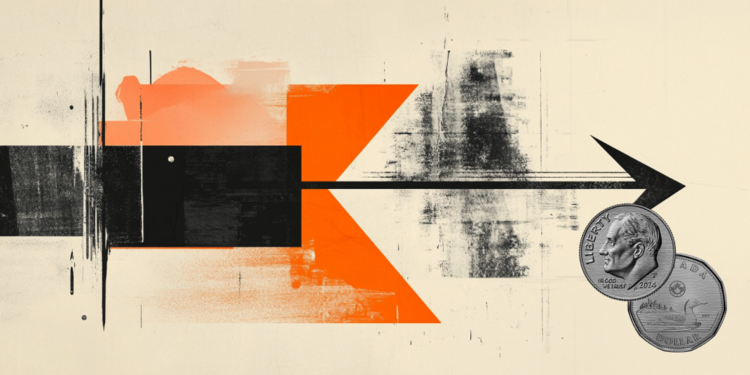- USD/CAD trades flat near 1.3950, holding below the 200-day EMA.
- DXY eases to 100.15 as softer US CPI data fuels rate cut speculation.
- Canada pushes to eliminate Trump-era tariffs ahead of potential trade talks with the United States.
The USD/CAD pair remains under pressure for the second consecutive day, trading flat near 1.3950 during Wednesday’s European trading hours. The pair is holding below the 200-day Exponential Moving Average (EMA), coinciding with a broader decline in the US Dollar (USD) following a weaker-than-expected Consumer Price Index (CPI) print on Tuesday.
The US Dollar Index (DXY) stabilized around 100.15 after briefly dipping to 99.81 on Wednesday, pulling back further from the one-month highs hit earlier this week on Monday. The initial optimism around US-China tariff relief has faded, with traders refocusing on the potential economic fallout from shifting trade dynamics. Meanwhile, softer inflation data sparks bets that the Federal Reserve (Fed) could resume its easing cycle, with markets now pricing in the possibility of two rate cuts later this year.
Geopolitical trade tensions also remain in focus after Canada’s Ambassador to the US, Kirsten Hillman, stated on May 12 that eliminating the “ruinous” tariffs imposed by the Trump administration is Canada’s top priority in any future trade talks. Hillman stressed that “no discussion to be had with the Americans without that being on the table from Canada’s perspective”, calling it the “starting point” for negotiations. The remarks underscore lingering trade friction between the two countries, adding a layer of uncertainty for the Canadian Dollar (CAD) amid broader US Dollar (USD) weakness.
On the commodities front, West Texas Intermediate (WTI) crude oil prices eased to $62.93 per barrel, trimming gains from the previous session. The decline was attributed to concerns over rising US crude inventories, as reported by the American Petroleum Institute, which indicated a 4.3 million barrel increase. This development has tempered the recent optimism driven by easing trade tensions and has implications for the Canadian Dollar, given Canada’s status as a major oil exporter.
Looking ahead, market participants are turning their attention to a raft of high-impact US data due Thursday, including April’s Producer Price Index (PPI), Retail Sales, and weekly Initial Jobless Claims. Fed Chair Jerome Powell’s speech will also be closely watched for policy cues, especially amid growing speculation of a policy pivot.
Canadian Dollar FAQs
The key factors driving the Canadian Dollar (CAD) are the level of interest rates set by the Bank of Canada (BoC), the price of Oil, Canada’s largest export, the health of its economy, inflation and the Trade Balance, which is the difference between the value of Canada’s exports versus its imports. Other factors include market sentiment – whether investors are taking on more risky assets (risk-on) or seeking safe-havens (risk-off) – with risk-on being CAD-positive. As its largest trading partner, the health of the US economy is also a key factor influencing the Canadian Dollar.
The Bank of Canada (BoC) has a significant influence on the Canadian Dollar by setting the level of interest rates that banks can lend to one another. This influences the level of interest rates for everyone. The main goal of the BoC is to maintain inflation at 1-3% by adjusting interest rates up or down. Relatively higher interest rates tend to be positive for the CAD. The Bank of Canada can also use quantitative easing and tightening to influence credit conditions, with the former CAD-negative and the latter CAD-positive.
The price of Oil is a key factor impacting the value of the Canadian Dollar. Petroleum is Canada’s biggest export, so Oil price tends to have an immediate impact on the CAD value. Generally, if Oil price rises CAD also goes up, as aggregate demand for the currency increases. The opposite is the case if the price of Oil falls. Higher Oil prices also tend to result in a greater likelihood of a positive Trade Balance, which is also supportive of the CAD.
While inflation had always traditionally been thought of as a negative factor for a currency since it lowers the value of money, the opposite has actually been the case in modern times with the relaxation of cross-border capital controls. Higher inflation tends to lead central banks to put up interest rates which attracts more capital inflows from global investors seeking a lucrative place to keep their money. This increases demand for the local currency, which in Canada’s case is the Canadian Dollar.
Macroeconomic data releases gauge the health of the economy and can have an impact on the Canadian Dollar. Indicators such as GDP, Manufacturing and Services PMIs, employment, and consumer sentiment surveys can all influence the direction of the CAD. A strong economy is good for the Canadian Dollar. Not only does it attract more foreign investment but it may encourage the Bank of Canada to put up interest rates, leading to a stronger currency. If economic data is weak, however, the CAD is likely to fall.

